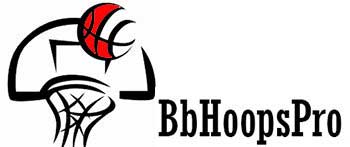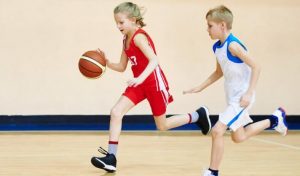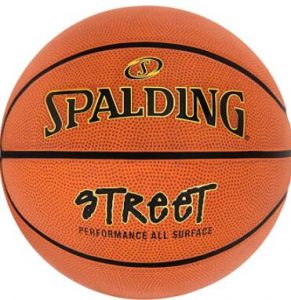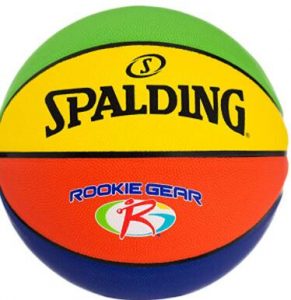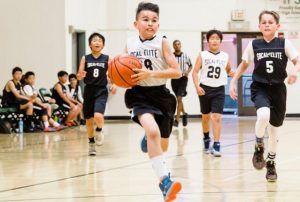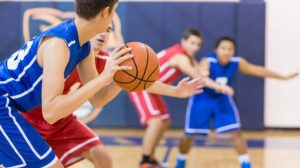Each sport activity helps us to feel good physically and mentally. And if you are thinking of such an activity for your kid, youth basketball is a perfect choice!
Youth basketball can help your kids make new friends, develop teamwork skills, and maintain their health.
We are going through some important information about the best youth basketball, including ideal age, basketball size and material, safety tips, and many more.
What Age is Suitable to Use Youth Basketball Size?
A right-sized basketball offers children a better opportunity to succeed in the game while hitting shots, honing, etc., and a kid feels like a professional player.
Also, using the best youth basketball size will enhance the power to beat the zone and hold late-maturing kids in the game for the long future.
Basketballs are available in sizes varying from size 1 to size 7. The age range for youth basketball with size 5 is 8-11 years old kids.
What Sizes Are Youth Basketballs?
Young kids must have the proper size basketball for their size, strength, and ability.
- For kids of 8-11 years, A standard youth basketball’s circumference is 27.5″, and weight is 17 oz. Size 5 ball is the best youth basketball.
- For kids of 2-4 years, a size 1 ball with 16 in circumference and 8oz weight, also known as Micro-mini, is ideal.
- For kids of 4-8 years, a size 3 ball with 22 in circumference and 10oz weight, also known as Mini, is ideal.
- For boys ages 12-14 and girls ages 12 and above, a size 6 ball with 28.5 in circumference and 20oz weight, also known as Intermediate Size, is available. Sometimes also used in many youth basketball games.
- For boys above 15, a size 7 ball with 29.5 in circumference and 22oz weight, known as Official Size, is ideal.
Are Girl’s Basketball and Guy’s Basketball the Same?
No! There is a difference between boys’ and girls’ basketball from the high school level as there are enlarging physical differences between the genders.
Boys’ and girls’ basketball size is the same in elementary school as both have the same stature.
But after that, in the middle school years, boys’ upper body strength than girls. And so from the high school level,
For girls, a slightly smaller basketball with 28.5-29” in circumference and 18 to 20oz in weight. See More on:Buyer’s Guideline: How to Choose the Best Women’s Indoor Basketball?
And the boys’ basketball with 29-30” in circumference and 20 to 22oz weight is selected. See More on: Best Men’s Indoor Basketball – How to Choose the Best One?
How to Choose the Best Youth Basketball?
Size
There are three common sizes in competitive play; which size you choose is determinant by your age, gender, and league. If you want to buy a basketball, it’s important to consider the size.
– Size 7
It is the standard size for a basketball used in most men’s leagues. It has a circumference of 29.5 inches. (Check the men’s basketball here)
– Size 6
Women and many youth intermediate players use size 6 balls. They are a bit smaller, with a circumference is 28 and a half inches. (Check the women’s basketball here)
– Size 5
It is for younger children aged under 9 years it has a smaller circumference (27.5 inches). (Check the size 5 basketball here)
– Size 4
The size 4 ball with a circumference of 25 and a half inches is ideal for children aged 4 – 8. (Check the size 4 basketball here)
– Size 3
Lastly, a size 3 basketball with a circumference of 22″ is ideal for the youngest players! (Check the size 3 basketball here)
Note: Before buying a basketball, make sure to match the size with your backboard size.
Weight
The weight of a basketball can impact the play. It is hard to dribble and shoot if the ball is too heavy. If the ball is too light, it can be easier to shoot but more difficult to control.
Let’s see what weight is suitable for different age ranges of players.
- A size 7 ball weights 22 oz. It’s the standard ball type for men’s leagues.
- Size 6 basketballs have a standard weight of 20 oz. Women and many youth intermediate use size 6 ball.
- Size 5 is perfect for youth basketball, with a weight of 14 – 16 oz. It’s the most popular size for youth leagues.
- Size 4 is ideal for children aged 4 – 8, under the weight of only 14 oz.
- Size 3 is also known as a mini basketball.
Indoor/outdoor
Youth basketball is often played in different variations. For example, indoor and outdoor use different rules. The way the ball is handled also changes the game significantly.
This is why it’s noteworthy to consider which basketball fits your needs.
Outdoor courts demand a rugged design to make the ball resilient to abrasive surfaces and keep its playability in tough weather conditions.
Indoor courts require a different type of basketball, one that’s more forgiving and made to prevent damage to the playing surface.
Rubber basketballs are perfect for indoor play, they have a softer surface and cannot bounce as high as solid rubber balls. This makes them more appropriate for use in an indoor environment.
Composite or synthetic basketballs are ideal for both outdoor and indoor use. The ball’s durability is impressive; it can withstand the outside elements. The inside of the ball is durable, too, making it perfect for indoor play.
Daily Training or Tournament Play?
The daily training sessions are not very aggressive because it’s mostly a teaching process. The players learn about their skills and how to use them in a live game while improving their general understanding.
Tournament play involves more physical contact, so it is not recommended for children under 12 years of age.
The top features that make basketball suitable for daily training are the following:
- When choosing a ball for daily training, make sure it is resilient, easy to use, and inexpensive.
- There should be a good grip on the ball, and it should be resilient for training purposes.
- It also has to be inexpensive so that it doesn’t cost a lot of money if lost or damaged.
The top features that make basketball suitable for tournament play are the following:
- It should be round to improve handling and shooting accuracy by players.
- It should be bouncy to allow players to shoot at different angles (low or high).
- It should be durable enough not to lose air pressure quickly or break easily during play.
Grip
The grip determines how the player will hold the ball and what shots he can take or pass on to his teammates.
There are two types of grips: Standard and Youth.
The standard grip is the traditional way to hold a basketball, with your fingers on top and your thumb underneath so you can easily control it as it bounces off the court or dribbles up and down on your fingers.
The youth grip is different because it’s more challenging to keep control of as there is no such thing as dribbling up and down with this type of grip, but it’s easier to shoot off-balance shots that come at you from an angle.
A ball’s grip is one of the essential features of a basketball. Experts say that leather-wound, rubber-coated, and composite basketballs are the best choices for youth players because they usually have better grips than other types of balls.
Durability
There are a lot of questions people have about the durability of basketball.
What kind of balls do you think are the most durable?
Many factors affect the durability of balls, but more expensive balls are more durable than cheaper ones. However, the material matters for the lifespan.
If you want your ball to last longer, you should take care not to damage it too much by hitting it against hard surfaces or slamming it so often on the ground during games.
If possible, use spiked shoes or wear handguards while playing basketball indoors or outdoors.
The average lifespan of a youth basketball is about 4 – 5 years.
Budget
Youth basketball balls cost around $8-10 (Check here). This price range is for a basic basketball that can be used for youth games.
Daily training balls cost around $20-30 (Check here). These are cheaper balls used for practice, drills, and warm-up before games.
Tournament balls cost $100+ (Check here). These are the high-quality tournament-grade indoor/outdoor balls that are often used in professional leagues or tournaments.
Note: The prices depend on the quality, brand, and how frequently it is used for each of these purposes.
Design
Designers can use color theory, understanding of psychology, and psychophysiology to help them decide which colors will work best on a given design.
The choice of color is also influenced by the personality and mood of the audience.
For example, orangish-brown balls are used for youth basketball because they are easier on the eyes, and people find it more fun to watch than bright colors.
Choose the Right Cover Material For Your Kids
There are 3 types of Basketball materials are available:
Leather basketball: Generally, professional players, including high school, are going for international games and practice. They are only for indoor games, and they need a break in time to break leather to have the best grip, so you have to play and practice with it till it gives an optimal feel. These are the most expensive balls but offer amazing grip and feel.
Synthetic basketball: Generally, semi-serious players use this Synthetic or composite basketball in training and games as it does not need break-in time. These can be used for indoor and outdoor play and are cheaper than leather but expensive than rubber balls.
Rubber basketball: These are the least expensive and are useful for any surface. These are great for kids, youth, or adults just learning the sport. But if you want a good feel and look, these are not for you.
What Brands Should You Choose Based On Youth Skill Level?
If you are a professional youth player, then for a better feel, the Spalding basketball is better. These are good in performance and made from high-quality leather for durability.
But as a beginners player, you need a durable and affordable option, so the Wilson basketball is better. Also, these feel good to the palm and have superior moisture-wicking material.
Safety Tips For Youth Playing Basketball
While playing the game, preventing your kid from injuries is also important. Follow these safety measures:
Warm-up: Start each game or practice warm-up to stimulate the blood flow and prevent injuries.
Protection: A kid should wear a proper protective kit with knee and elbow pads (Check the protective kit here) to prevent injuries.
Rest: If kids do not have enough rest, they are more prone to have injuries, so it is always best to have a proper diet and rest.
Youth Basketball Training
1. Training youth basketball indoors:
Do practice shooting indoor with youth basketball by keeping,
- 6-foot rims for kids of 4 to 7 years old
- 8-foot rims for 8 to 10 years olds
- 9-foot rims for 11-year-old
- 10-foot rims for 12 years and above.
2. Improve youth skills outdoors:
Training youth basketball on the court, which professionals generally use with 94 feet by 50 feet.
Participate in a youth basketball team or league to have a chance to play together with various personalities and players of diverse backgrounds.
How Do You Coach 7 Years Old Basketball?
At the age of 7, kids’ sensory-perceptive powers are mostly unrefined. Basic activities like jumping, changing direction, and running must be developed by playing games with the body and various equipment. You can use size 3 or size 5 basketballs and 6 to 8-foot rims for kids this age.
